120 Wreck
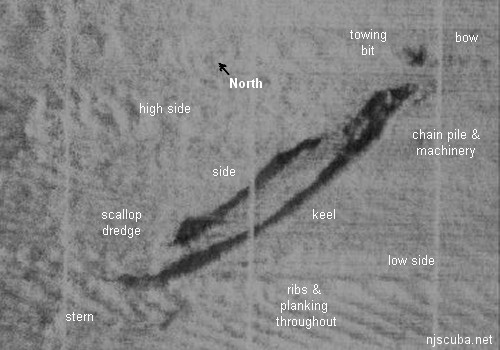
- Type:
- shipwreck, schooner barge
- Depth:
- 80 ft
You might first guess that the 120 Wreck is named for its depth, but actually, it is named for the 120-degree compass heading taken to get to it from Manasquan Inlet. The real name of this wreck is long lost to time, just another expendable schooner barge from the late 1800s / early 1900s.
Today the 120 Wreck consists of a nearly contiguous low wooden debris field, perhaps 200 feet long. A large towing bit near the bow indicates that this was a schooner barge and not a self-propelled sailing ship. At the other end of the site, a lost scallop dredge is wedged into the stern of the wreck.
The ribs and decking form many holes, tunnels, and overhangs, ideal homes for sea life, of which there is a great deal. Large crabs, Sea Bass, Blackfish, and ling can be found, as well as an abundance of lobsters. In fact, this part of the wreck is often referred to as "Heartbreak Alley" - a choice lobster every two feet or so, all out of reach! Smaller pieces of wreckage ( not shown ) lie scattered around the area.
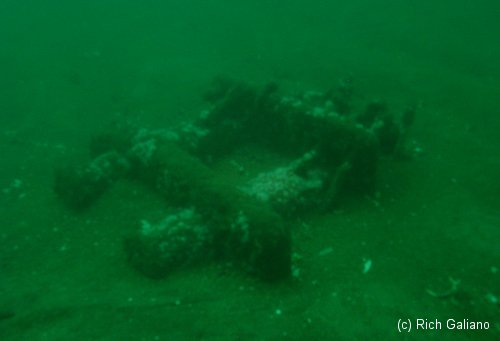
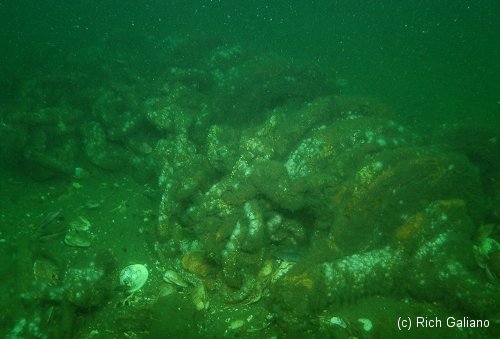
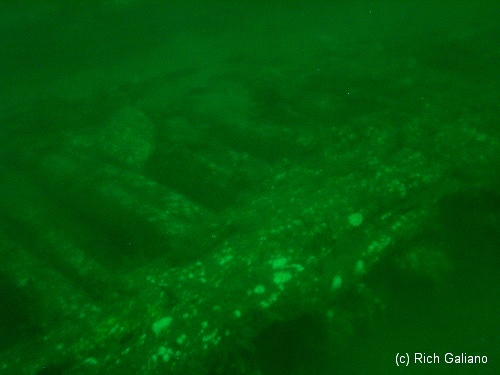
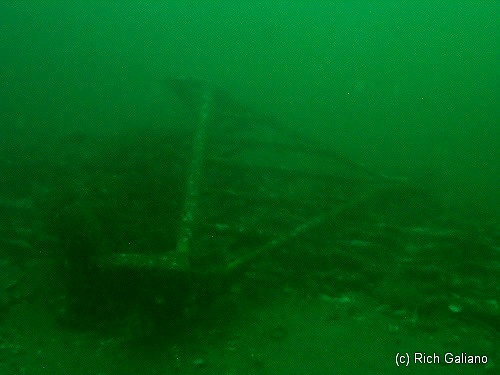
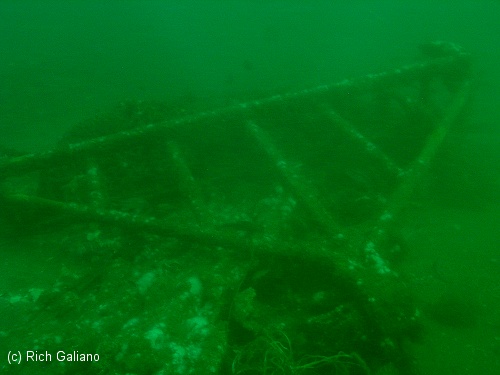
Side-scan sonar image courtesy of Capt. Steve Nagiewicz.

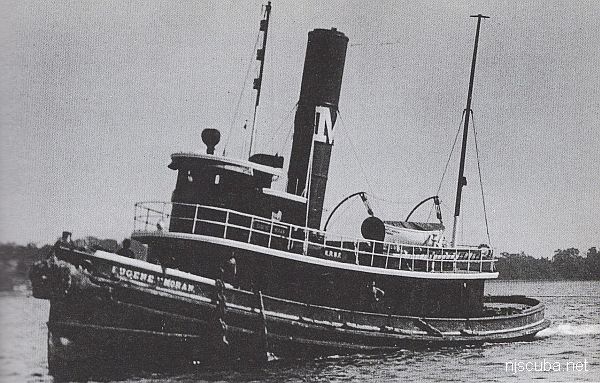
Questions or Inquiries?
Just want to say Hello? Sign the .